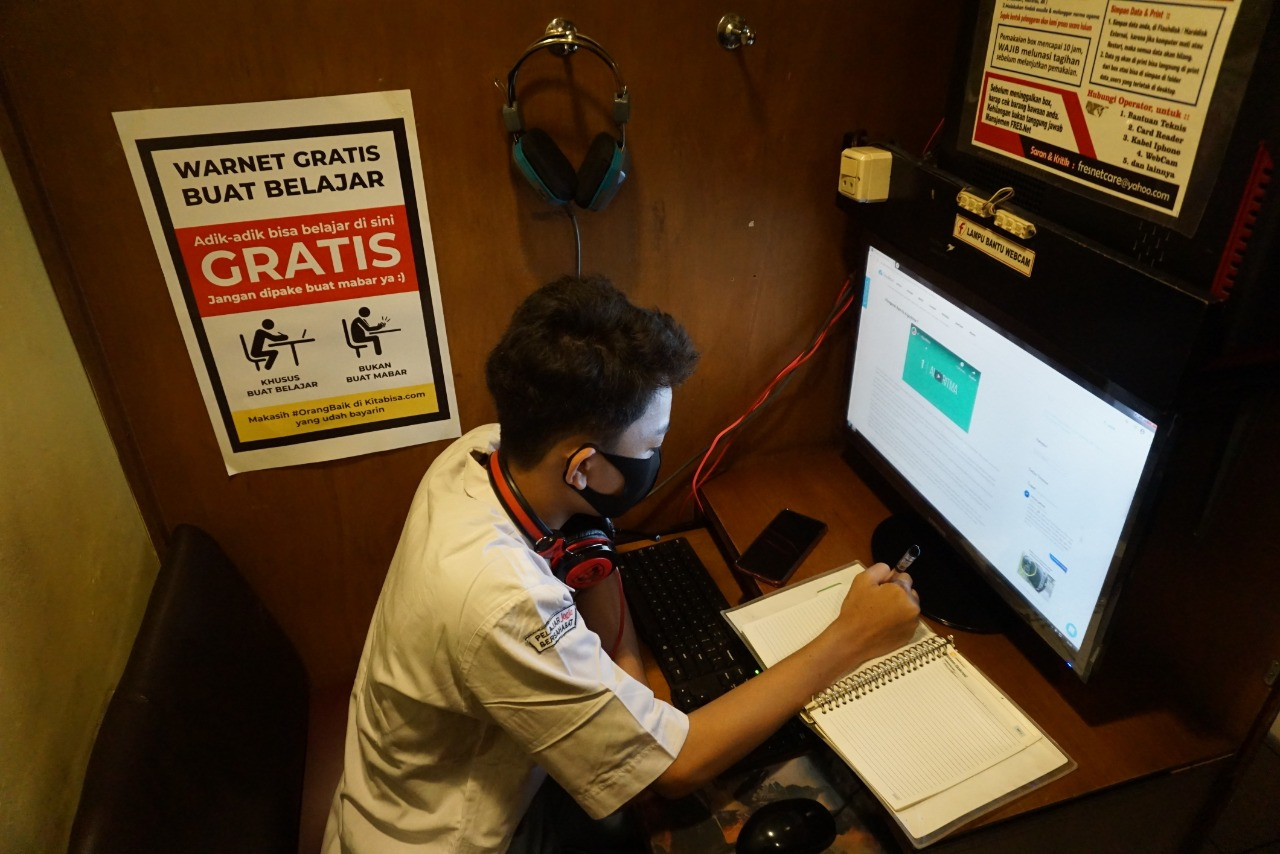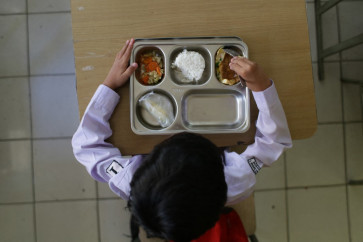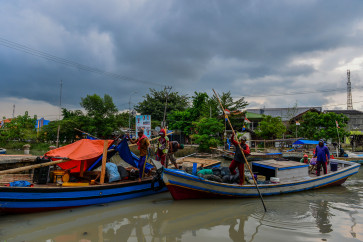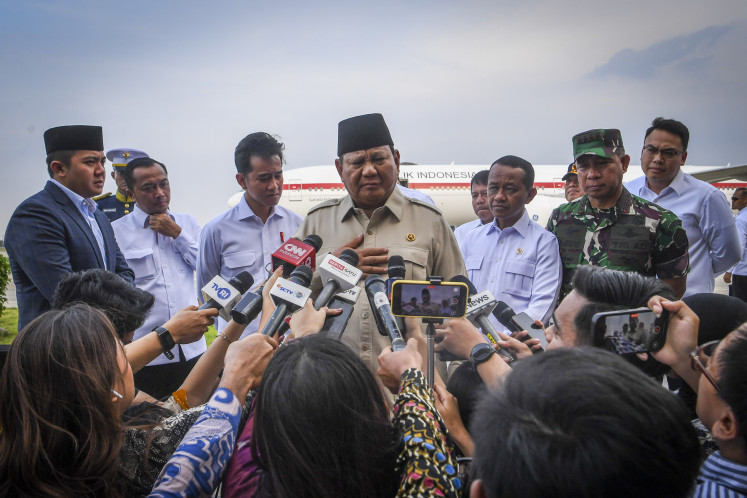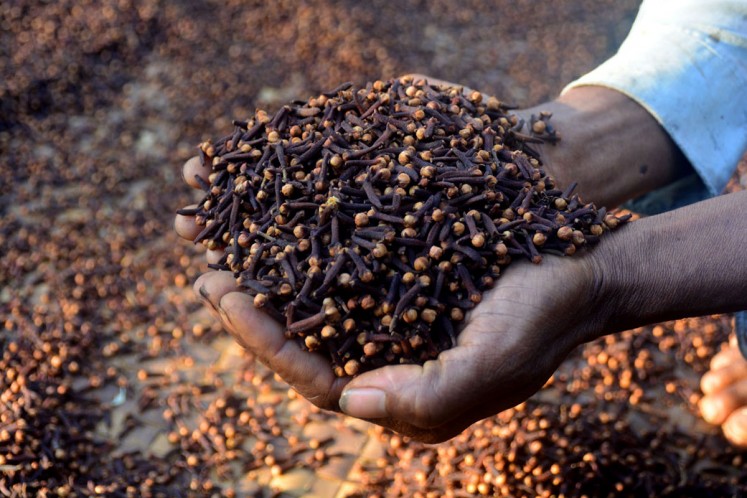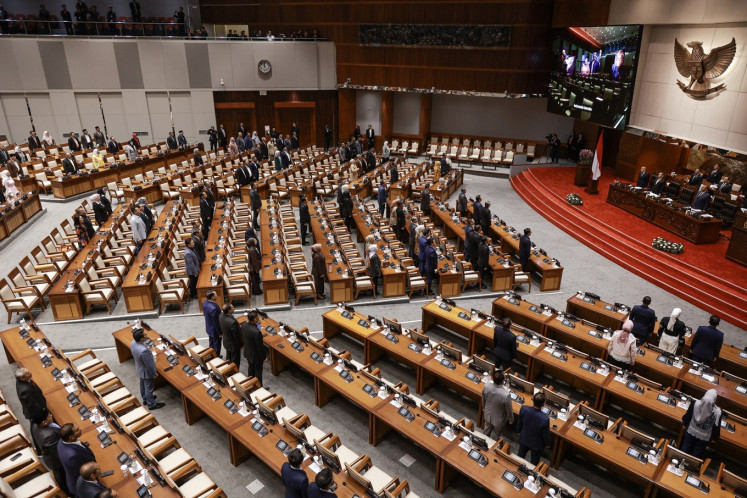Popular Reads
Top Results
Can't find what you're looking for?
View all search resultsPopular Reads
Top Results
Can't find what you're looking for?
View all search resultsIndonesian internet users hit 196 million, still concentrated in Java: APJII survey
The country's internet penetration rate has gone up to 73.7 percent from 64.8 percent in 2018. This means that the country is catching up with neighboring Brunei, Singapore and Thailand, whose internet penetration rates exceeded 70 percent last year.
Change text size
Gift Premium Articles
to Anyone
T
he number of internet users in Indonesia has increased by 14.6 percent to 196 million people last year, from 171 million in 2018, despite persistent challenges in unequal access and digital literacy, the Indonesian Internet Providers Association (APJII) nationwide survey has shown.
The survey also revealed that Indonesia’s internet penetration rate has gone up to 73.7 percent from 64.8 percent in 2018. This means that the country is catching up with neighboring Brunei, Singapore and Thailand, whose internet penetration rates exceeded 70 percent last year.
APJII secretary-general Henri Kasyfi Soemartono said that since the survey was conducted in the second quarter of 2020, the figures also reflect internet usage during the pandemic. APJII’s survey is generally assumed to reflect the figure from the previous year.
“We saw a lot more people accessing educational websites because students have to study from home during this time,” he said during the study dissemination on Monday.
Despite having more internet users, connectivity is still highly concentrated in Java, the country’s most populous island, followed by Sumatra, Sulawesi, Kalimantan, Bali and Nusa Tenggara, and lastly, Maluku and Papua, the survey finds.
This unequal access to the internet has kept Indonesia in 56th place in the digital competitive index, the same as last year, as the country continues to struggle to provide internet connection in remote areas.
Meanwhile, the Communications and Information Ministry’s informatics director general, Ahmad M. Ramli, said the biggest challenge ahead would be to provide internet for the country’s approximately 12,500 villages with no 4G connection.
Read also: Govt promises nationwide 4G internet services by 2022
“We will start to develop internet infrastructure in the country’s blind spots, mostly next year,” he said, adding that the government was planning to provide internet access to around 4,000 villages and subdistricts in the outermost, underdeveloped and frontier regions (3T) by 2021.
In August, President Joko “Jokowi” Widodo announced that his administration would allocate Rp 30.5 trillion (US$2.1 billion) in the 2021 state budget for information and communication technology (ICT) development to accelerate digital transformation for governance and to push for connectivity inclusion.
The lack of knowledge and the availability of proper devices to access the internet are also among the obstacles hampering people from going online, Henri said.
However, the 2020 e-Conomy SEA report by Google, Temasek, and Bain & Company also found that Southeast Asia added 40 million new internet users to date this year, from 360 million users last year.
An overwhelming 95 percent of Indonesian people access the internet through smartphones with mobile data, with less than 10 percent using a fixed broadband connection at home, offices or public spaces, the APJII survey also shows.
“This is a challenge for internet service providers to increase fixed broadband penetration in the future,” he said.
With the increase in the number of internet users in Indonesia, Henri also warned about the risks to cybersecurity. The APJII survey found that 57.8 percent of respondents claimed their personal data on the internet was secure and 66.4 percent said a virus had never infected their devices.
However, Henri suggested that the responses only reflected the users’ perception and did not correlate with reality.
The National Cyber and Encryption Agency (BSSN) previously revealed that Indonesia had recorded more than 88 million cyberattacks during the first four months of the year.
Read also: Indonesian businesses ramp up cybersecurity budget amid rampant attacks
Communication and Information System Security Research Center (CISSReC) chairman Pratama Persadha said there was a possibility of underreporting with more cyberattacks occurring than actually reported, as the APJII data came from personal reports.
“The public does not feel threatened by cyberattacks if there is no financial loss or stolen account, but there’s more to cyberattacks than that. They could come in the form of e-mail spam or fraudulent text messages,” he told The Jakarta Post on Tuesday.
He went on to say that a lack of education causes widespread low awareness of digital safety, which can be harmful as it increases people’s vulnerability to cybercrimes.
“With the rise of internet users in the country, the government should include cybersecurity as part of the curriculum in schools and internet providers should constantly educate their consumers through advertising, for example,” he said.
Similarly, digital literacy organization ICT Watch program director Indriyatno Banyumurti also suggested that the national curriculum should include lessons on digital literacy, such as data privacy and security and critical thinking when gathering information online.
“Many people still feel confident sharing their personal data on social media, and this is concerning,” he said.

